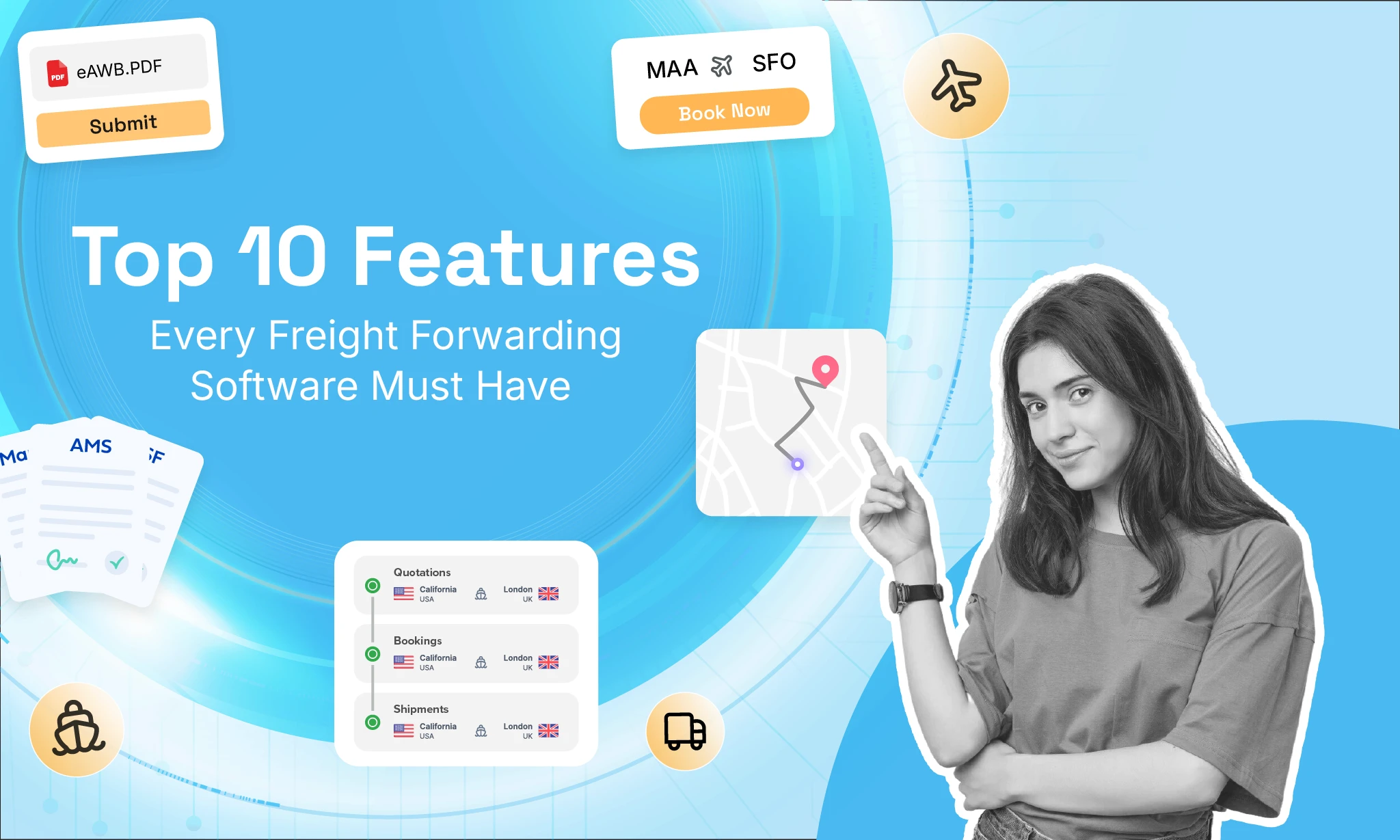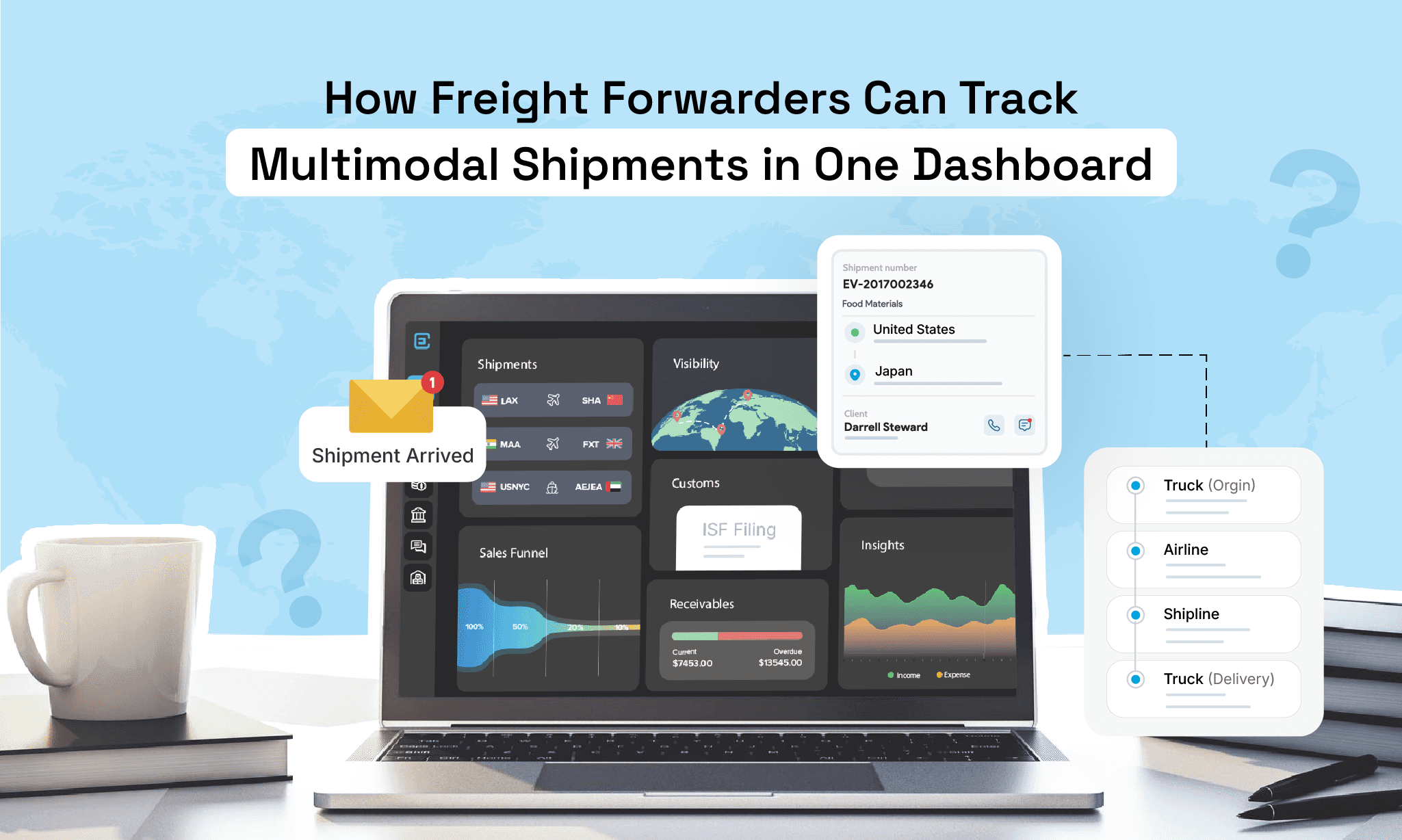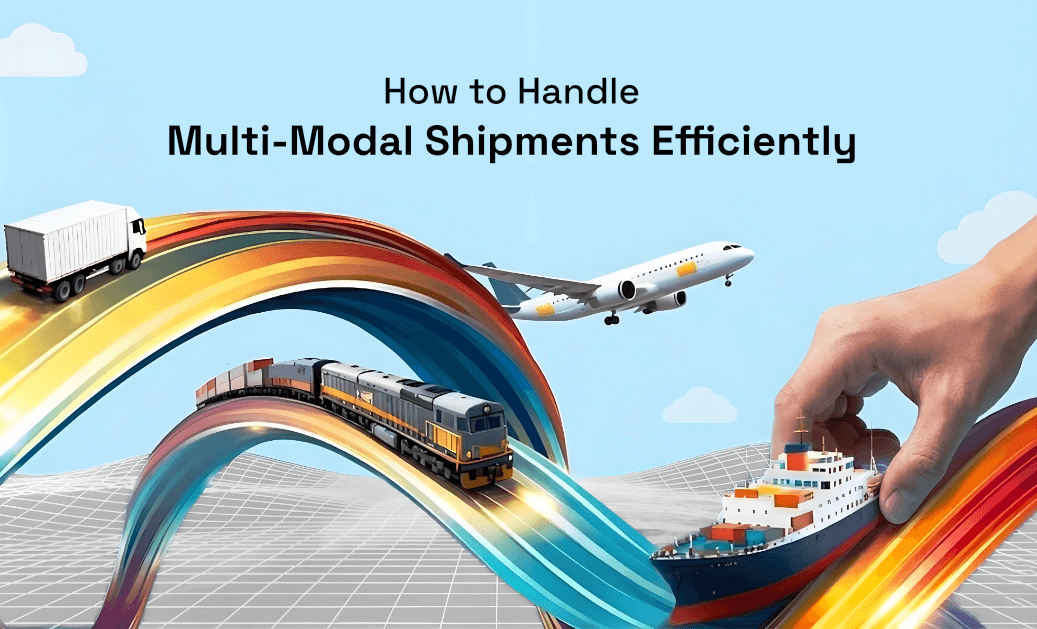How to Streamline Freight Forwarding Process?
Author:
Aashinya
Published On:
Oct 21, 2025
1 min read
As global trade is evolving, it faces new pressures, like strict environmental rules, changing tariffs, and customs regulations. It is vital for the freight forwarders to adapt quickly to all these changing requirements to remain competitive.
Many logistics and freight forwarding companies are still struggling to adapt to these changes and are using outdated digital tools. These outdated tools can slow down booking and customs processes, especially during peak times. However, innovative solutions like automated documentation and data-driven automation are transforming the industry by helping freight forwarders save time and reduce costs.
The blog explains about expert insights and practical strategies to help businesses streamline freight forwarding operations, improve efficiency, and increase customer satisfaction in a rapidly changing environment. If your company aims to stay ahead and grow in 2025 and beyond, this guide may provide valuable guidance.
What Does Streamlining Mean in Freight Forwarding?
In freight forwarding, streamlining means simplifying and optimizing every step involved in moving goods from one place to another. The primary goal of streamlining is to eliminate bottlenecks and unnecessary tasks that slow down the shipping process.
The process involves using technology, such as freight forwarding software and automation tools, to handle repetitive tasks, digitize paperwork, and improve communication among all stakeholders involved, like freight forwarders, carriers, customs authorities, and customers.
It is recommended to streamline the freight forwarding process to achieve faster transit times, reduce freight costs, and avoid unforeseen delays that often arise from manual errors or miscommunication. This leads to a more efficient transportation process where shipments are tracked in real time, and any issues can be addressed proactively.
Moreover, streamlining the process will help freight forwarders handle international shipments more smoothly by ensuring compliance with customs regulations and facilitating seamless operations across international borders.
Ultimately, streamlining freight forwarding not only improves the overall efficiency of the logistics process but also enhances client satisfaction by providing transparency, reliable delivery times, and cost-effective shipping solutions.
It empowers freight forwarders to focus on their core competencies, such as managing complex shipping routes and negotiating competitive rates, while automating routine tasks to keep the entire shipping process running smoothly.
Assessing Your Current Freight Forwarding Processes
Before making any improvements or changes in the current freight forwarding process, it is important to understand how your current process works in detail. The first step is to carefully examine each phase of the freight forwarding.
To start with, check when the orders are received, through processing, customs clearance, transportation, and finally to delivery at the destination. At all these stages, look for the common causes of delays or errors, such as manual paperwork bottlenecks, miscommunications between teams, or inefficient routing choices.
Sometimes, paperwork might take too long to process due to manual handling or a lack of digital tools. In such cases, delays can occur, which can lead to shipment holdups. Communication gaps between departments or external partners like carriers and customs authorities can cause misunderstandings that result in missed deadlines or compliance issues.
Additionally, outdated systems can contribute to the chaos, which might not provide real-time visibility into shipments, making it difficult to monitor progress and respond proactively to potential delays. So by thoroughly identifying these problems and by understanding the root causes, overall efficiency can be improved. These steps will also help speed up the process and reduce errors, as a result of which the overall freight forwarding process can be streamlined.
Steps to Streamline Freight Forwarding Operations
The following steps outline strategies that help freight forwarders streamline their workflows and ensure logistics run smoothly.
1. Digitize Documentation
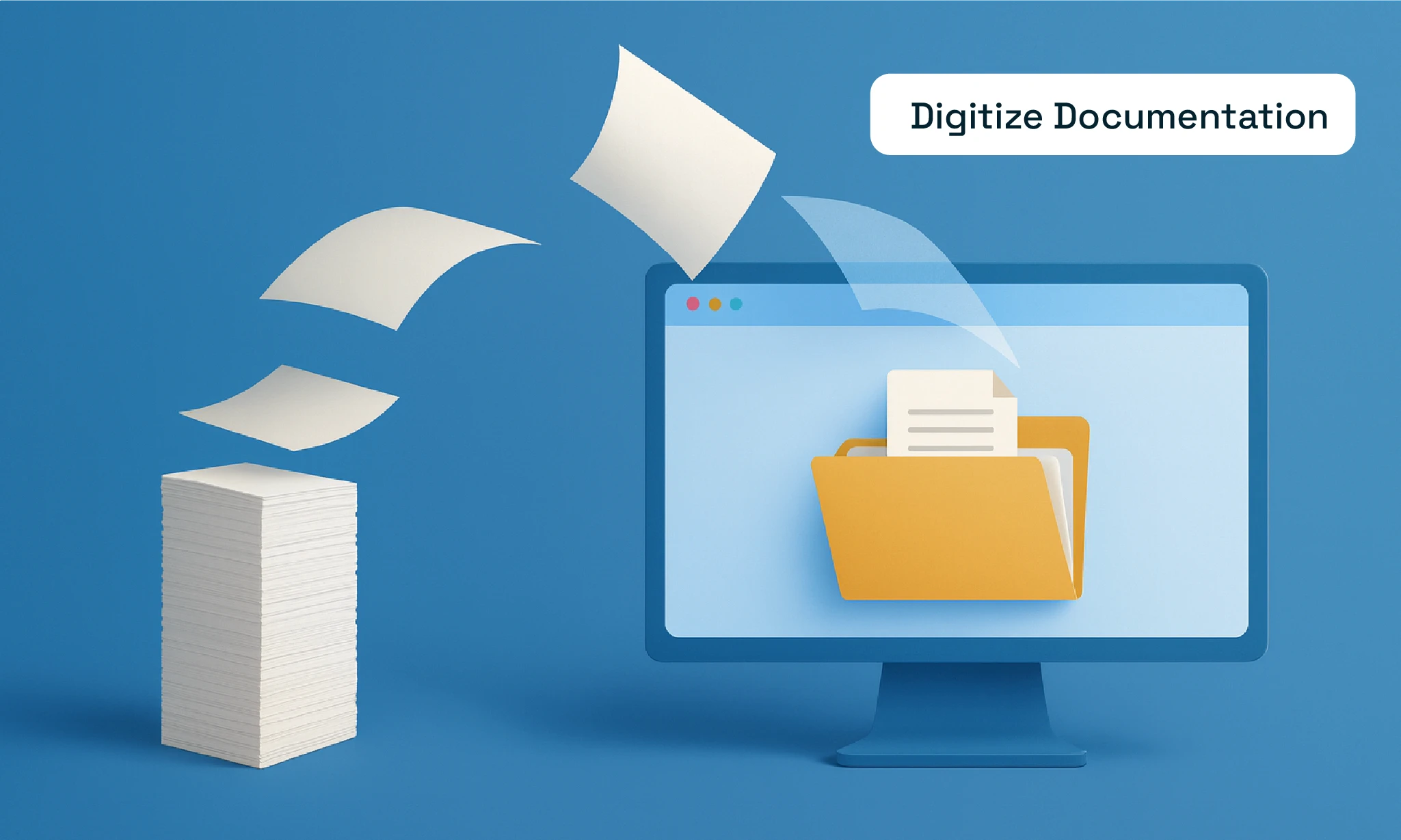
Paperwork is a big part of freight forwarding, and the documentation process can be a big task. Documents like bills of lading, commercial invoices, customs documentation, and other papers are necessary but can slow down the process if handled manually. So, digitizing these documents will help store, create, and share them electronically.
Additionally, when stored in software, it is very easy to retrieve and share. So the documentation process will not slow down the freight forwarding process and will make it easier to keep track of all the important information. Many freight forwarding software solutions provide tools for managing documentation digitally.
2. Enhancing Visibility and Reporting
Real-time visibility has become a crucial feature that eases tracking and helps with smooth operation. If customers can view where their goods are at any moment, it automatically increases the trust factor and there are chances for the customers to choose the same brand again. When customer satisfaction increases, businesses tend to scale up smoothly and grow.
Beyond earning customer trust and real-time visibility, comprehensive reporting helps businesses to monitor shipments closely, identify potential issues early, and take proactive measures to optimize the entire transportation process.
As a result, this transparency enables informed decision-making with up-to-date information, helping logistics managers pinpoint inefficiencies, improve delivery times, and reduce transportation costs. Additionally, it ensures compliance with international trade regulations and enhances overall operational efficiency. These practices helps with cutting costs and maintaining a competitive edge in the dynamic world of freight forwarding.
3. Centralize Communication
Freight forwarding operations rely on communication, which is key to success in the logistics industry. The industry involves many stakeholders like, suppliers, carriers, customs authorities, and customers. Giving proper and accurate information to all of them helps with smooth operation and ensures shipment is delivered on time to the customers.
When using a freight forwarding software, the communication can be centralized and accurate information can be passed to all stakeholders. Additionally, it avoids any kind of miscommunication and prevent any delays. As a result, proactive decision-making can be made depending on the situation without having to wait for delayed updates or manual reports, ensuring timely responses to any issues that arise.
4. Automate Repetitive Tasks
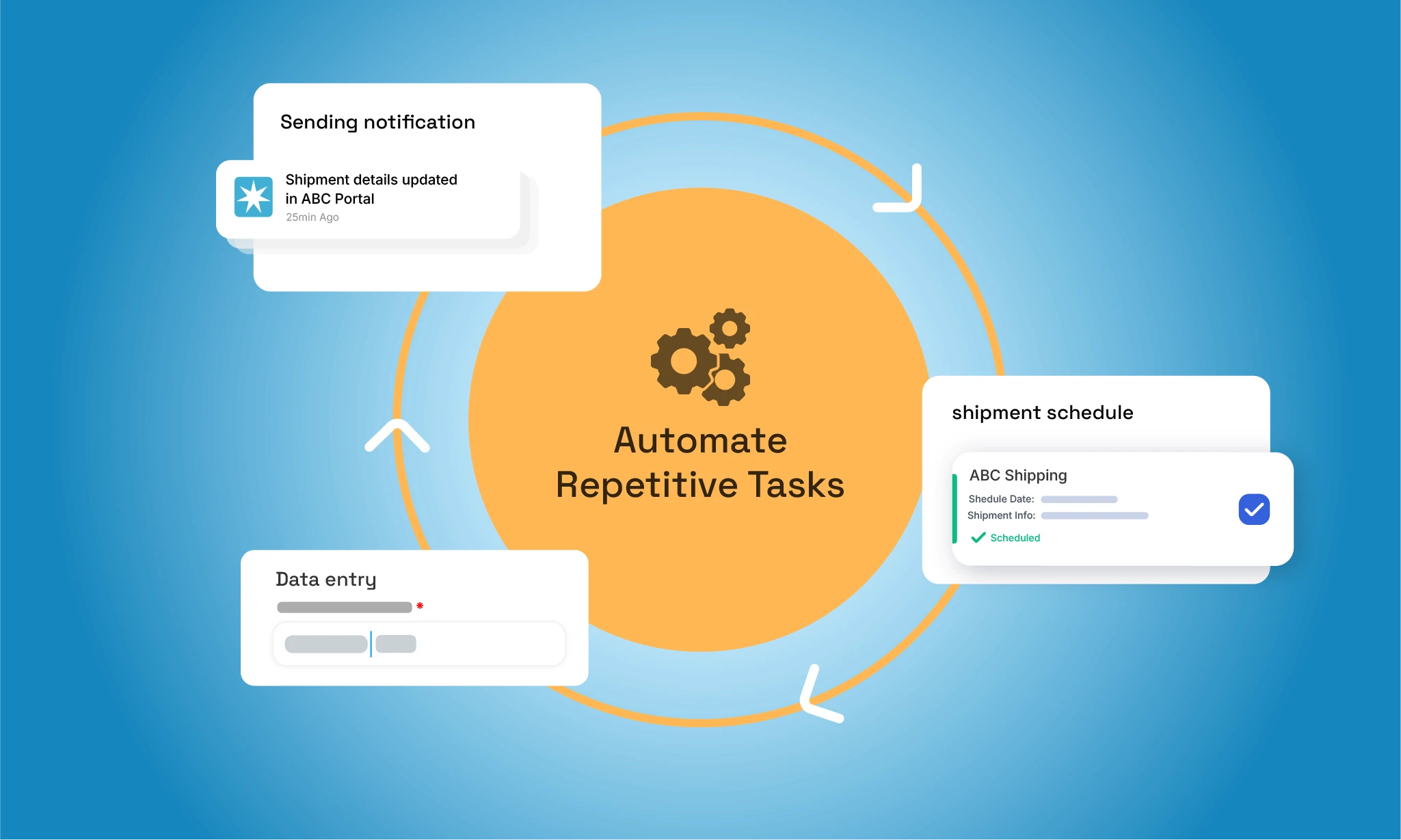
Most of the tasks in freight forwarding are monotonous, which can be automated. It will not require human intervention and human resource can be used for other effective tasks. Tasks like data entry, shipment scheduling or sending notification can be automated with the helps of a software.
Additionally, automating such tasks helps reduce human errors and increases precision. The documents required for customs clearance can also be stored and retrieved quickly without having to search in a pool of emails.
As a result of automating such tasks, the team can focus on more complex tasks that require human decision-making and interaction. Many tasks in freight forwarding are repetitive, such as data entry, scheduling shipments, or sending notifications. Automating these tasks with software saves time and reduces human error. It also helps with customs clearance by automatically filling out required forms based on stored data.
5. Deploying Improvements and Ensuring Adoption
Staying on-trend helps improve operations and also brings in new business. Freight forwarding software introduces new tools and processes to make operations flow smoothly. It is important that the team understands and adapts to these changing trends to stay competitive in the industry.
Make sure the team understands the benefits of the changes and knows how to use the new software effectively. Make sure your team understands the benefits of the changes and knows how to use new software effectively. To support these new initiatives, encourage the team to provide feedback. Also, proactive support of this software helps with the successful adoption of the new software.
Benefits of Streamlining Freight Forwarding
Streamlining your freight forwarding process brings many benefits and are listed below.
Faster Deliveries
Streamlined freight forwarding operations significantly improve efficiency. According to a 2023 report by the International Federation of Freight Forwarders Associations (FIATA), shipment delays can be reduced by up to 40%. The software not only accelerates delivery times but also helps improve the overall customer satisfaction and strengthens the reliability of logistics services.
Lower Shipping Costs
Streamlining the freight forwarding process helps lower the shipping cost. It improves the overall supply chain management by optimizing workflow. This also enhances the coordination among various transportation services. All these enhancements put together lower the unnecessary shipment costs.
Better Customer Satisfaction
Customers are the king of any business. Keeping them on the blind side can increase frustration, and they might not choose the same business or brand the next time, even if the services are perfect. Real-time tracking and clear communication keep customers informed and also increase trust. This will help the customers to choose the same business.
Improved Operational Efficiency
Automation and integration go hand in hand and they reduce the manual work and errors. As a result, it makes the logistics operations more effective and efficient. So by streamlining such repetitive tasks and ensuring seamless data flow between systems, freight forwarders can focus on higher-value activities and improve overall service quality.
Scalability
Streamlined freight forwarding process is easy to handle as the business grows. This scalability allows freight forwarders to efficiently manage increased volumes without sacrificing service quality or delivery times.
How Freight Forwarding Software Helps
A freight forwarding software plays a central role in streamlining operations and addresses all the pain points that a business undergoes. It provides features such as Customer Relationship Management (CRM), real-time shipment tracking, automated documentation, and communication tools. Using the right software allows the freight forwarders to handle complex logistics with ease. Additionally, it ensures compliance with international trade regulations and customs requirements, which prevents any irregularities and penalties.
Freight Forwarding Software Benefits
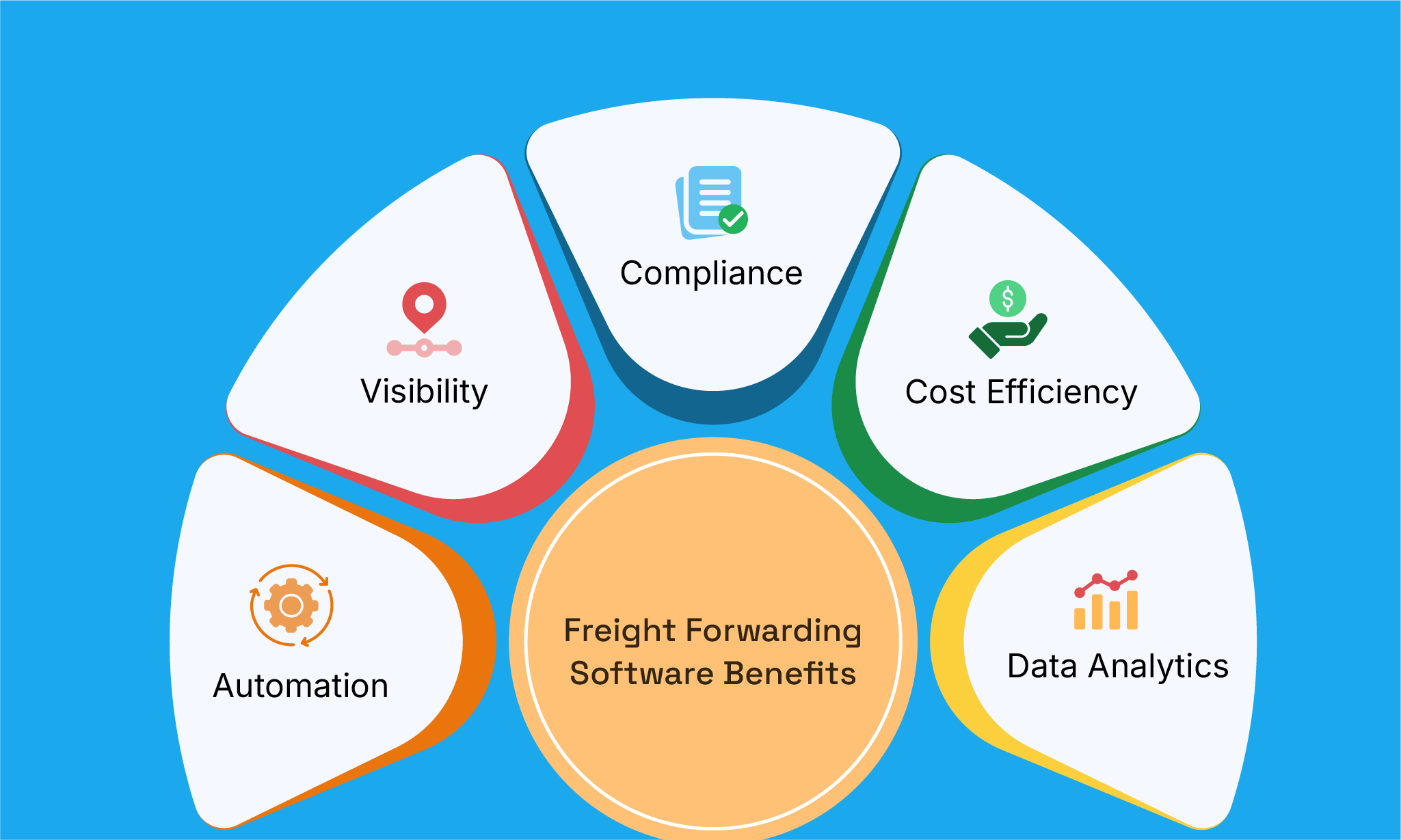
Automation: The freight forwarding software automates routine tasks, which helps save time and reduces errors.
Visibility: Real-time visibility is a vital feature that provides updates on shipments and delivery schedules. This helps with proactive decision-making.
Compliance: Documenting customs regulations can be a hectic task. Freight forwarding software reduces the workload and automates the entire documentation process.
Cost Efficiency: The software helps optimize the shipping routes and transportation modes to reduce costs.
Data Analytics: It provides valuable insights from historical data and helps improve decision-making.
Conclusion
A streamlined freight forwarding business is easier to run and scale compared to one that is not streamlined. Streamlining can be achieved with the help of freight forwarding software, which digitizes documents, enhances visibility, centralizes communication, automates tasks, integrates systems, and adopts the right tools.
As a result, the business grows while improving efficiency, reducing costs, and boosting customer satisfaction. These improvements also provide a strong foundation for scaling your freight forwarding business. Using advanced technology ensures data security and helps logistics operations run smoothly and grow successfully.
Frequently Asked Questions (FAQs)
1. What is freight forwarding software?
Freight forwarding software is a digital tool that helps manage and automate freight forwarding operations.
2. What are the benefits of using freight forwarding software?
The benefits of using freight forwarding software are improved operational efficiency, real-time shipment visibility, cost savings, better compliance, and enhanced customer experience.
3. How can I scale my freight forwarding business?
Scaling up a freight forwarding business can be done by changing to an advanced technology, expanding service providing, strengthening partnerships, training the team to the advanced technology, and focusing on customer needs.
4. Why is digitizing documentation important in freight forwarding?
Digitizing documents is essential because it speeds up processing, reduces errors, and makes storing and securely sharing important paperwork much easier.
5. What role does automation play in freight forwarding?
Automation in freight forwarding not only saves time on repetitive tasks but also reduces human errors, significantly boosting overall operational efficiency. Moreover, it allows human resources to focus on areas that require proactive decision-making and strategic thinking, enhancing the effectiveness of the entire process.
Don't forget to share this blog!

